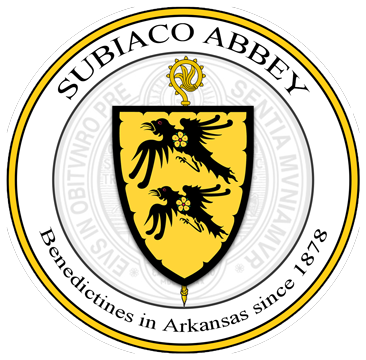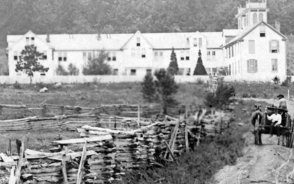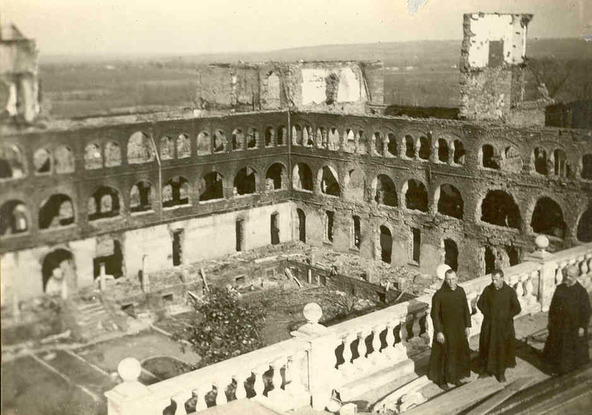Subiaco History
Overview of Our History
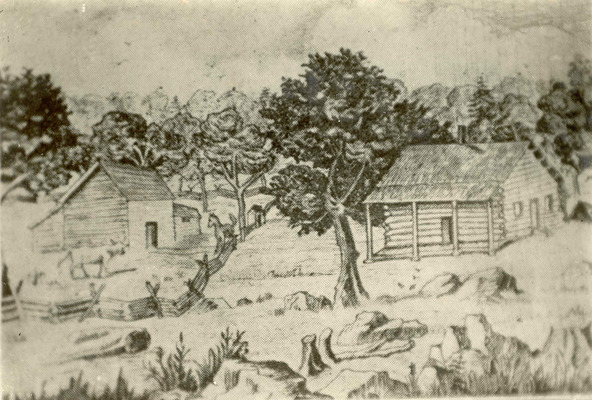
Subiaco Abbey, originally called St. Benedict Priory, is a member of the Swiss-American Congregation (group of monasteries) of the world-wide Benedictine Confederation. Subiaco was founded by three monks of St. Meinrad Abbey in Indiana: Fr. Wolfgang Schlumpf, Br. Kaspar Hildesheim and Br. Hilarin Benetz, and soon “adopted” by the motherhouse of St. Meinrad, the Abbey of Maria Einsiedeln in Switzerland. In November, 1877, an offer of land for a new Benedictine foundation in Arkansas was made to Abbot Martin Marty of St. Meinrad Abbey by the Little Rock-Fort Smith Railroad Company. The monks of this new foundation were to minister to the German-Catholic settlers coming to the western Arkansas River Valley. On March 15, 1878, the three founding monks arrived in Logan County to begin the new Benedictine enterprise. Their first housing on their new land was a small little cabin that is pictured. Gradually the little community grew as new members, largely from Switzerland and later from the U.S., came to help in the work.
In 1891, Pope Leo XIII raised St. Benedict Priory to the rank of an abbey, with the name Subiaco (the place in Italy where St. Benedict began life as a hermit). In March, 1892, the first abbot was elected, Fr. Ignatius Conrad, a monk of Einsiedeln Abbey, who was working in Missouri. In 1898, work was begun on a new abbey in the present location, built of “Subiaco” sandstone. The original frame monastery, about a mile distant, burned on December 15, 1901, by which time part of the new stone abbey was almost ready for occupation. By then the monks had a farm, a school for boys and many German-American parishes in Arkansas and Texas.
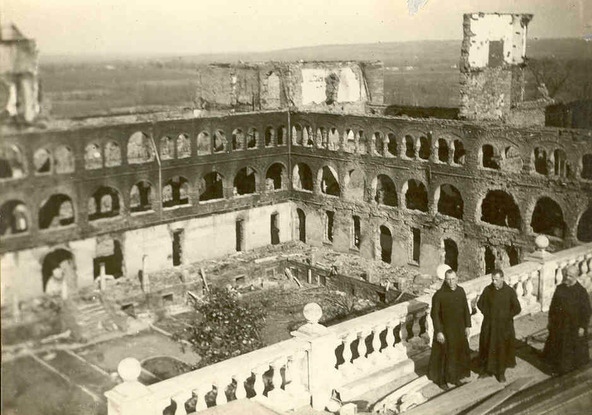
The second abbot, Fr. Edward Burgert, was elected in 1926 and governed until his resignation in 1939. On December 20, 1927, three quarters of the abbey was destroyed by fire. In 1939, the third abbot, Fr. Paul Nahlen, was elected. The most important event in the 1940s and 1950s was the planning and building of the abbey church, completed in 1959. Abbot Paul died in 1957 and Fr. Michael Lensing became the fourth abbot. This next period, 1958-1968, was a great period of building, expansion, and renovation at Subiaco. Other important events in this decade were: the opening of Coury House Retreat Center in 1963, Subiaco monks also left to pioneer a new foundation in Nigeria (1964-1968) and founded Santa Familia Priory in Belize, Central America in 1971. Subiaco would lose its foundation in Nigeria due to the Biafran War. Abbot Michael Lensing resigned for health reasons in 1974 and Fr. Raphael DeSalvo was elected the fifth abbot. The renewal and modernizing of Subiaco continued under Abbot Raphael’s leadership during the 1970s and 1980s. In 1989 the sixth abbot of Subiaco, Fr. Jerome Kodell, was elected. By this time there were fewer monks and “downsizing” became necessary in some of the traditional work of the abbey, especially parish and school work. Still, other apostolates developed or continued. Newly upgraded programs and buildings at the abbey continued the traditional works of Benedictine monks. The main spiritual work of monks: the public praying of the daily Divine Office begun in 1878, continues each day at Subiaco. In March of 2015, the seventh abbot of Subiaco was elected--Abbot Leonard Wangler, OSB. Browse the pictures on this page to see just some of the photos from our first early history
